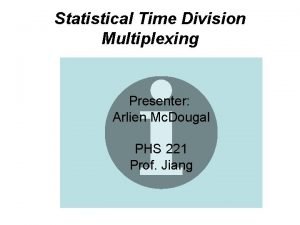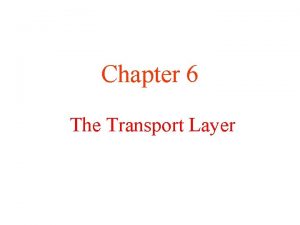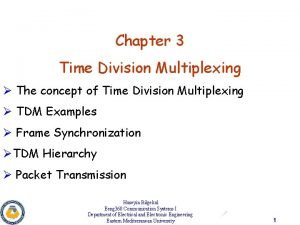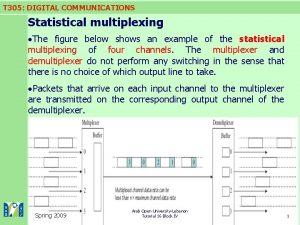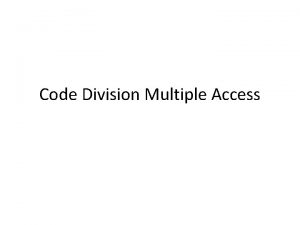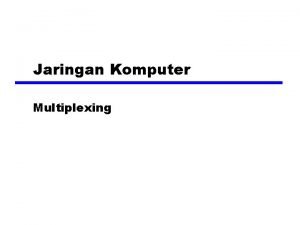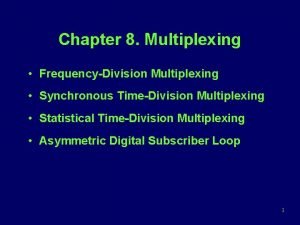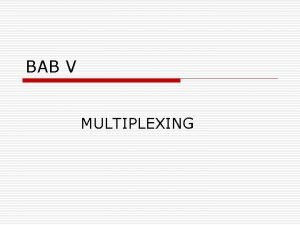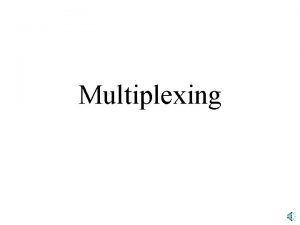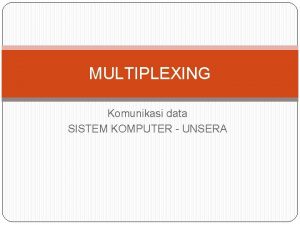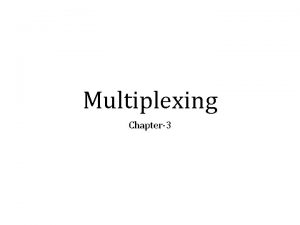Statistical Time Division Multiplexing Presenter Arlien Mc Dougal











- Slides: 11

Statistical Time Division Multiplexing Presenter: Arlien Mc. Dougal PHS 221 Prof. Jiang

Objectives • Explain what is Statistical Time Division Multiplexing • Describe how STDM work • Compare Asynchronous Multiplexing to Synchronous Multiplexing

What is Statistical Time Division Multiplexing

• Statistical Time Division Multiplexing is a process of time multiplexing where the time slots on the time division multiplexing (TDM) medium between Statistical time division multiplexing (STDM) multiplexers are dynamically allocated. • STDM multiplexers are known as asynchronous multiplexers to differentiate them from the synchronous time division multiplexers used in PSTN.

• In this allocation any input to the STDM multiplexer can be assigned to any time slot on the Time Division Multiplexing medium. • Time slots on the TDM medium are assigned to input channels that have data ready to send over the TDM medium to a distant STDM multiplexer.

HOW DOES IT WORK?

• To accomplish dynamic allocation of any input to any time slots, the TDM multiplexer places a header on the data that each input channel has ready to transmit. • The header informs that receiving STDM multiplexer which output channel is to receive the data.

ILLUSTRATION

ASYNCHRONOUS vs. SYNCHRONOUS

ASYNCHRONOUS vs. SYNCHRONOUS • Dynamically assign slots • Synchronized time slot in the TDM path • Better use of capacity. • Wastes of capacity. • Greater number of channels. • Limited number of channels. • Better utilization of composite TDM circuit. • Utilization can be improved by using a STDM and increasing the number of input channels.

QUESTIONS
 Statistical time-division multiplexing
Statistical time-division multiplexing Upward multiplexing and downward multiplexing
Upward multiplexing and downward multiplexing Crash recovery in transport layer
Crash recovery in transport layer Time division multiplexing block diagram
Time division multiplexing block diagram Statistical multiplexing example
Statistical multiplexing example Jason dougal
Jason dougal Lamination adhesive formulation
Lamination adhesive formulation Code division multiplexing adalah
Code division multiplexing adalah Long term evolution - advanced
Long term evolution - advanced Dwdm presentation
Dwdm presentation Short division vs long division
Short division vs long division Long division rational functions
Long division rational functions
